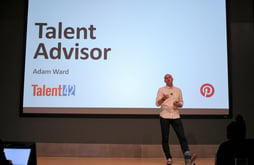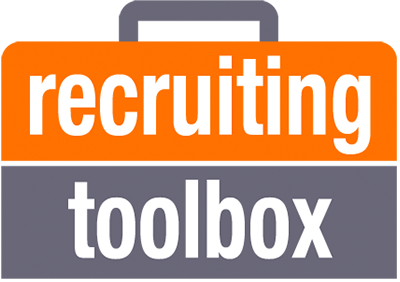Recruiting Toolbox Blog
How to Create a High Accountability, Shared Responsibility Talent Advisor Model with Adam Ward, Former Head of Global TA, Pinterest

Below is a summary of key points from Adam Ward's (former Head of Global Talent Acquisition at Pinterest) keynote, which focused on how his tech recruiting team has moved to a true Talent Advisor role.
Talent42 2018 opened with a fantastic keynote from Adam Ward of Pinterest. Adam is super aligned to the business and has built his career working for companies who are mission-driven and in high-growth mode.
Adam started with WHY it matters that recruiters work as Talent Advisors. “The tech space is so crowded now that what worked before for companies like IBM doesn’t necessarily work now. The fastest growing and most dynamic companies are venturing into new lines of business and from a talent lens, they are attracting the best by thinking about each line of business as a new company with a very different environment. They form moats around talent and are great at hiring fungible engineers and retaining them by moving them across different lines of business, rather than having them leave for a new challenge or environment. Because of this, we in recruiting have to work differently.”
So, what does this mean, to work differently? Adam’s first suggestion is to “bust the funnel and stop thinking about how many poor souls we have to put at the top of the funnel to make one hire.” You can’t tie talent to just one job, talent really operates more in networks.
To get top talent, Adam focuses on strategic market mapping, managing relationships with use of CRMs and TRMs, and holding “bespoke events” that specifically engage certain talent. “Discovery of talent has been democratized and is everywhere, so now it’s all about engagement.” One big key to success with this approach? You have to know whether your businesses need generalists or specialists – and be able to tailor the process and candidate experience to the interests of those specialists you’re recruiting.
So how do we do this? What does the roadmap look like? Adam shared 7 key tactics.
- Be Curious. Curious about your company, about competitors, about products, and sales and revenue growth. “Recruiters need to avail themselves of all the data and info that the company has”, says Adam.
- Time Well Spent. Look at the time your company spends holistically on recruiting and then figure out how to save them time. According to Adam, “hours spent are disproportionately at the top of the funnel. We need to stop spending time on activities that are not correlated to success and return time to the recruiting or hiring manager whenever possible.”
- Know Your Competition. Adam recommends that we all come up with a competitive intelligence index. Keep it simple: how do you rate vs. them, how do you pitch against them, and how do they pitch against you.
- A big idea that Adam shared is a step beyond what we see most companies take the time to do, and that is adding what he calls “churn calls”. A churn call happens a couple of weeks after a candidate declines their offer. Either the recruiting manager or hiring manager (not the recruiter) calls the candidate to learn more about their decision and why. Candidates usually have a combination of reasons that they cite and what the caller learns from the candidate informs them for the future.
- Evolve the Process. “Speed of innovation has increased massively and we need to change how we recruit,” said Adam. He shared how each year at Pinterest, they evolved and recruited differently, moving from a simple front end or back end orientation to six specific engineer profiles, to a total req-based approach to get more senior, specialist engineers. In the words of Adam, “we can’t just take a best practice from somewhere else and slap it in place here”.
- Think Like an Engineer. Adam’s advice for recruiters is to “structure your thinking like a systems thinker – break down a big problem into small pieces. Be a first principle thinker; ask yourself what is the most important thing and then re-center around that work.”
- And, he says, lead with data that drives a behavioral change. “Find out what those 3-5 things are and be maniacal about leading with that.” Also, engineers run a lot of A/B tests, so we should too, and then remove things that don’t make sense.
Adam’s key tactics are great advice for recruiters looking to build relationships with the business. It’s no longer a nice to have, but a business imperative. Adam put it this way, “Your company and the industry are moving at a pace they have never moved at before. They need us to be true Talent Advisors.”
At Recruiting Toolbox, we 100% agree with Adam. Our companies need us to operate at a Talent Advisor level that goes beyond anything we have done before. Adam’s insights and 7 key tactics are a great start. To learn more about helping your team grow as Talent Advisors, you can explore Recruiting Toolbox’s customized Talent Advisor training for teams as well as access the free resources at our Recruiting Toolbox download page. You can also learn more about Talent42, the national tech recruiting conference, which will be held in June.
